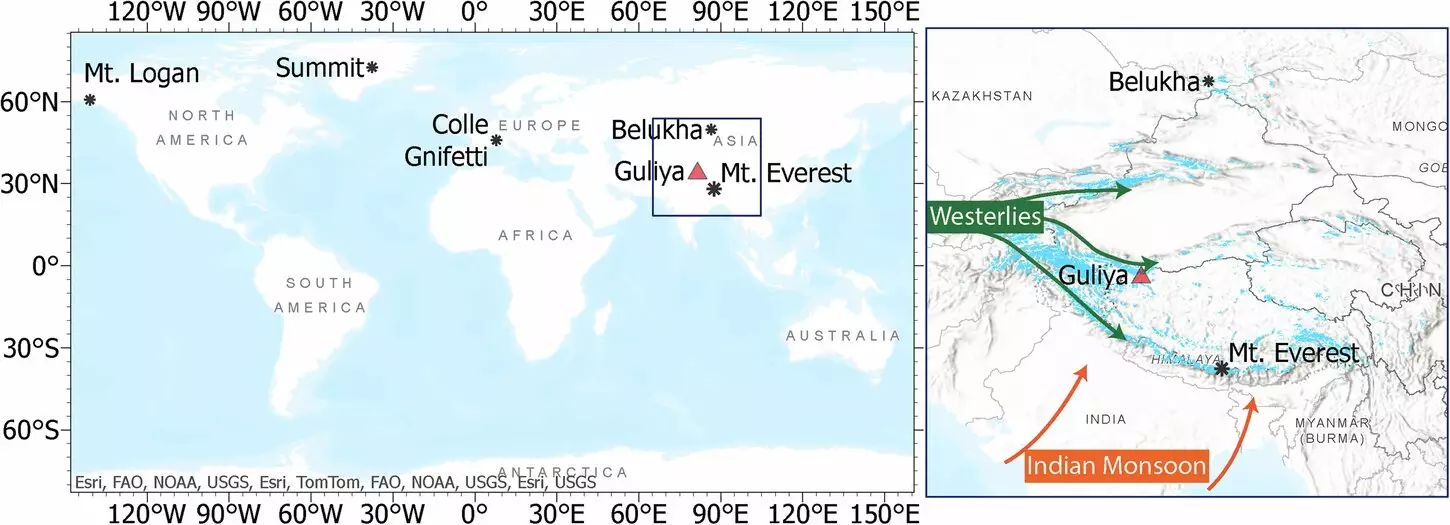In a striking discovery that highlights the pervasive impact of human activity on remote ecosystems, a collaborative research team led by Dr. Franco Marcantonio from Texas A&M University has unveiled the alarming levels of lead contamination found in a glacier located on the Tibetan Plateau. This investigation, encapsulated in their paper “Source of lead in a Tibetan glacier since the Stone Age,” which appeared in the journal *Communications Earth & Environment*, indicates that even the most isolated regions of our planet are not immune to the adverse effects of industrialization. The findings particularly underscore the troubling reality of how pollutants can traverse vast geographical divides, raising crucial questions about environmental management and policy.
The Tibetan Plateau, often referred to as the “Roof of the World,” is the highest and largest plateau on Earth, situated predominantly in southwestern China and stretching near the famous Himalayas. Covering an area approximately four times the size of Texas, this region is not only significant for its natural beauty but also plays a crucial role in the Earth’s climate and hydrology. The Guliya Ice Cap, a key focus of the study, serves as an archive of climatic changes and anthropogenic influences over millennia. With this glacier serving as a canvas, researchers can paint a picture of environmental shifts, revealing an unsettling trend—an uptick in lead pollution coinciding with the onset of significant industrial activities in the region.
Tracing the Source of Contamination
Through meticulous analysis of lead isotope ratios performed at Texas A&M’s Williams Radiogenic Isotope Facility, the research team traced the origins of lead contamination to emissions from leaded gasoline used in China. Alarmingly, the study revealed that significant lead pollution began to infiltrate the ice cap in 1974, peaking between the years 2000 and 2007. The investigation illuminated an unsettling truth: human-made pollutants extend far beyond the immediate environment, raising serious concerns about the long-term impact on both ecological and human health in even the most remote locales. The team concluded that the phasedown of leaded gasoline post-2007 marked a significant turning point, yet the legacy of contamination remains.
Dr. Marcantonio’s compelling assertion—that lead is a neurotoxin—brings forth grave considerations about the ramifications of lead presence in isolated ecosystems like the Tibetan Plateau. The study not only exposes the lead’s environmental footprint but also opens up discussions about how such contamination can affect wildlife and, potentially, human populations. The bioaccumulation of lead in food chains could pose health risks that may remain unnoticed until they manifest in more populated areas. Such findings call for urgent attention to pollution monitoring and the examination of atmospheric circulation patterns that facilitate the movement of these toxic substances.
The team employed ice core samples dating back around 36,000 years to juxtapose contemporary contamination levels with pre-industrial conditions. This comparative study establishes a crucial historical context for understanding the scale of human-induced environmental damage. Understanding this timeline is vital for scientists and policymakers as it helps to create a clearer picture of pollution’s trajectory over time. Moving forward, Dr. Marcantonio aims to expand his research to trace how lead and other contaminants interact across different ecosystems, including terrestrial and marine environments.
The findings from this research not only serve as a stark reminder of human negligence leading to global pollution but also underline the necessity for heightened awareness and action against environmental degradation. As scientists delve deeper into the complexities of lead movement through our ecosystems, it becomes increasingly clear that tackling pollution requires a concerted global effort. By understanding how pollutants like lead infiltrate even the remotest areas, we can better strategize to mitigate their impact on health and the environment, paving the way for a more sustainable future. This research is a clarion call that we must acknowledge and address the far-reaching consequences of our industrial choices.

